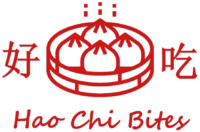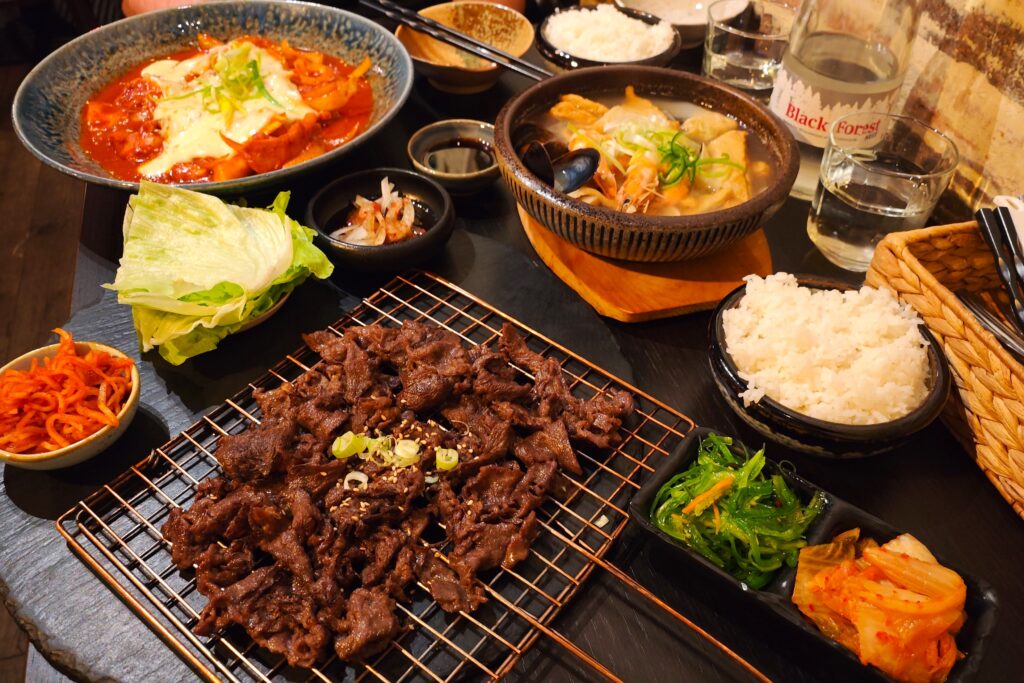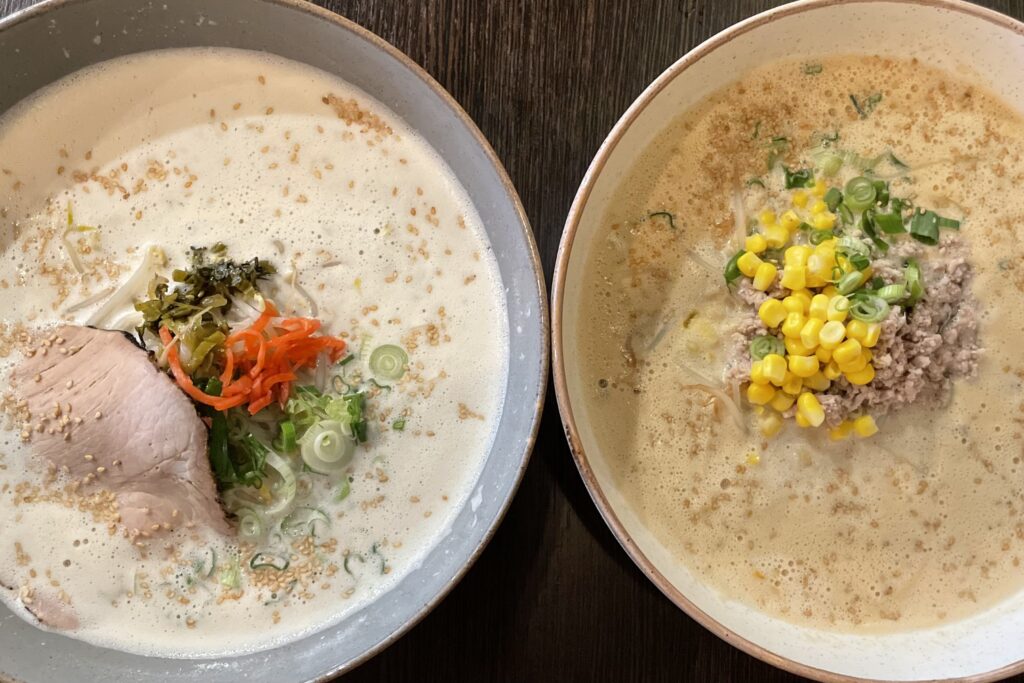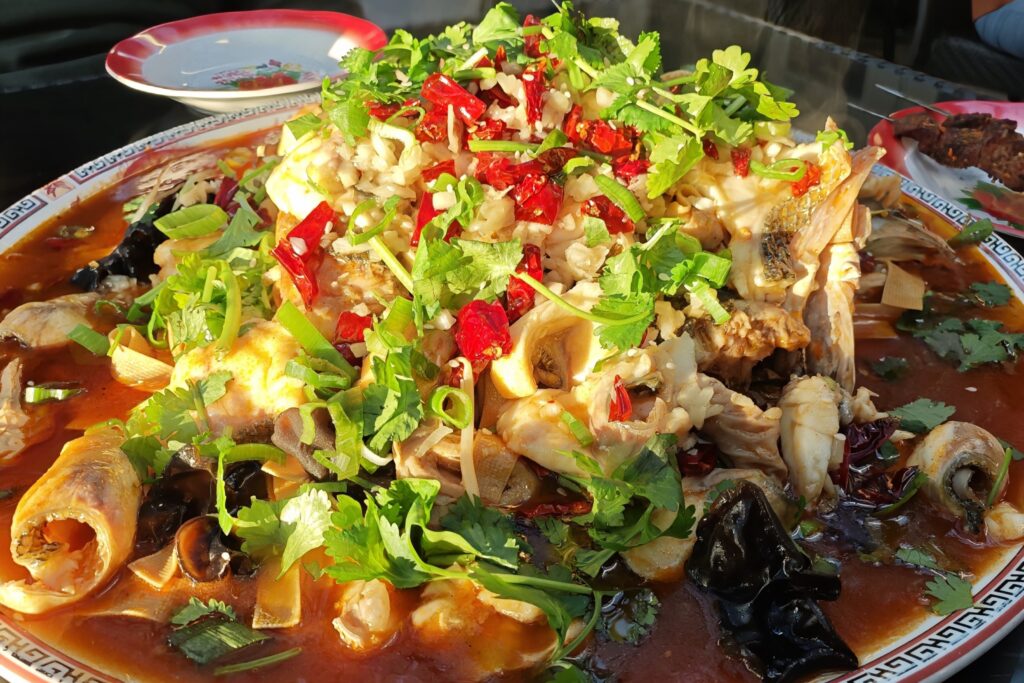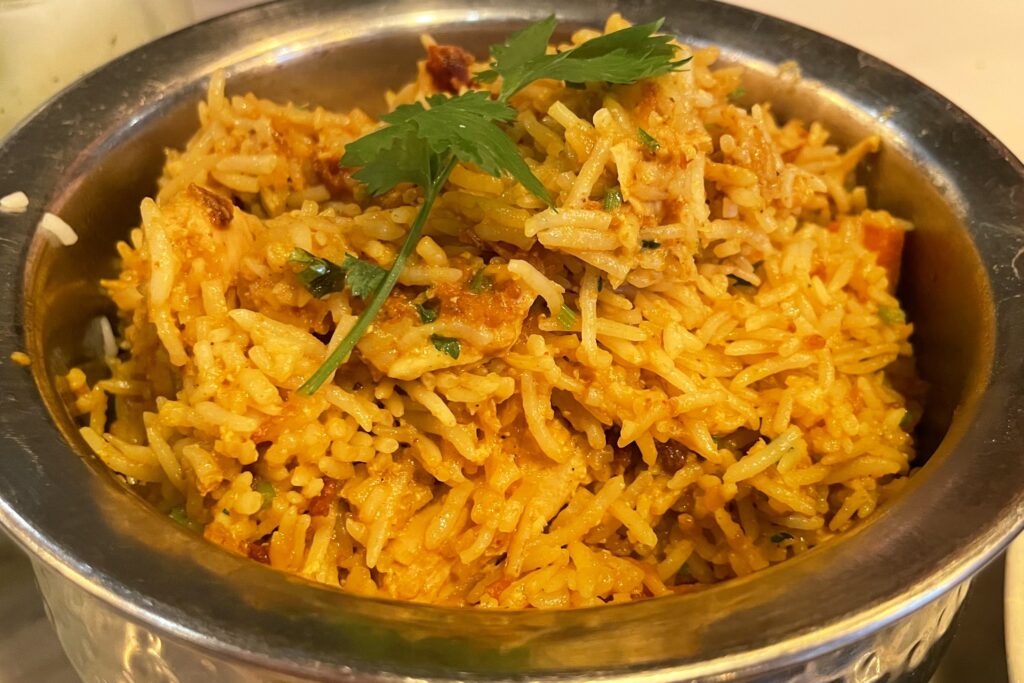Today we take you to a unique Korean restaurant that we stumbled upon—and we’re so grateful we did. This cozy spot is a mix of a restaurant and a bar, with its evening hours extending late into the night (open until 12 AM).
Danji has a very charming décor. The interior exudes a rustic charm with dim lighting, brick walls, and a light industrial touch. The walls are adorned with playful drawings of their culinary specialties, like grilled pork belly and soju—a traditional Korean distilled spirit known for its smooth, slightly sweet, fruity taste.
Restaurant Profile
🏷️ Name of the Restaurant: Danji
📍 Adress: Im Prüfling 63, 60389 Frankfurt am Main
🍜 Style: Korean Cuisine – street food snack, rice cake, grill, stir-fry, soup, noodle, rice dish, hotpot
💰 Price: around 25 – 35 EUR per Person (incl. drinks and tips)
Comfortable sofa seating is arranged to accommodate various group sizes, whether you’re on a cozy date for two, dining with friends, or celebrating with a larger group.

Before diving into the main courses, we’d like to spotlight a really special appetizer: 5 Maneul Ddongjib (마늘똥집).
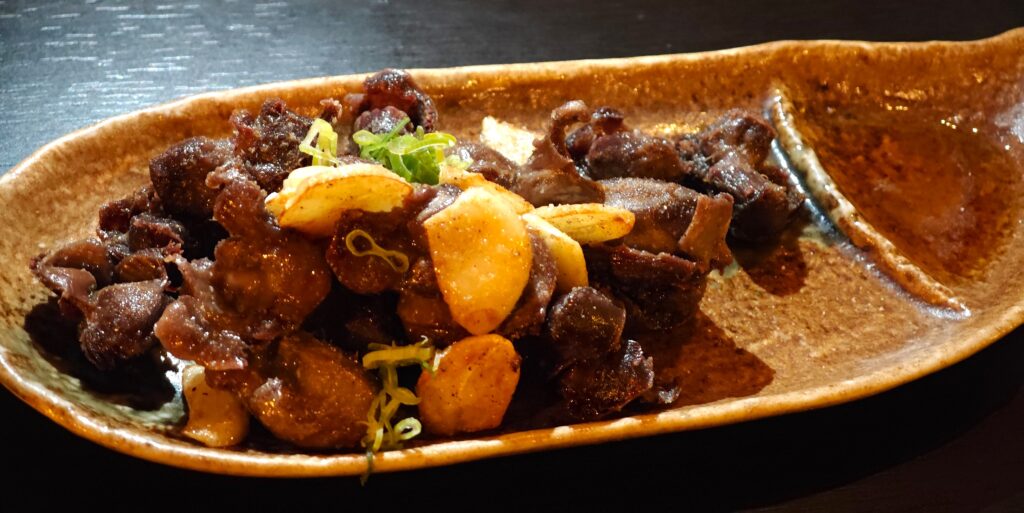
The name “Ddongjib” translates to “chicken gizzards”—a part of the chicken often overlooked but beloved in Korean cuisine, often enjoyed alongside drinks like soju or beer.
When grilled, as in this dish, the gizzards take on an irresistible combination of chewy, crisp, and slightly firm textures with a subtle charred edge. The grilling enhances the natural umami of the gizzards while adding a smoky depth that complements their earthy, savory taste.
Pair it with a fragrant sesame oil sauce – nutty aroma of sesame oil goes beautifully with the sea salt seasoning, bringing out the meat’s rich flavor while retaining its pleasant chewiness. The dish is also scattered with grilled garlic cloves, adding a lightly pungent, sweet, caramelized taste, and green onions, which lend a crisp, light sharpness.
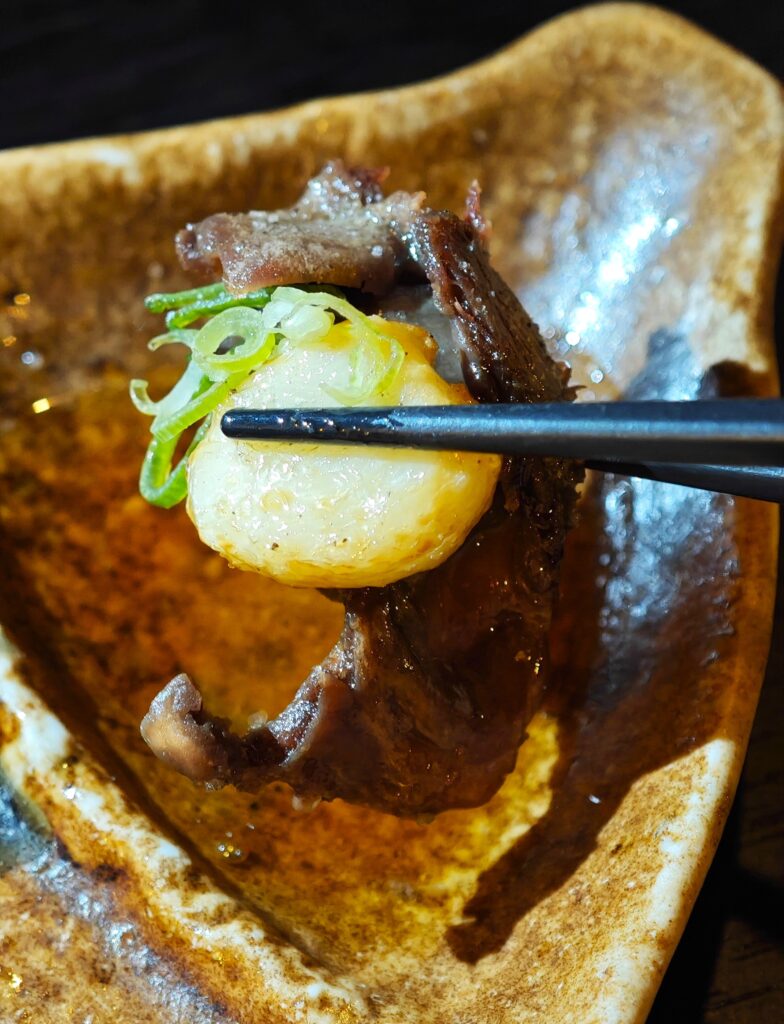
For the main course at Danji, you have to try their grills. A fantastic way to start is with the 8 Seoksue Osam Bulgogi (석쇠오삼불고기). The dish features tender pork belly (samgyeopsal) and succulent octopus (ojingeo), grilled and served on a grill net (석쇠), or “seoksue”, which is where it gets its name.
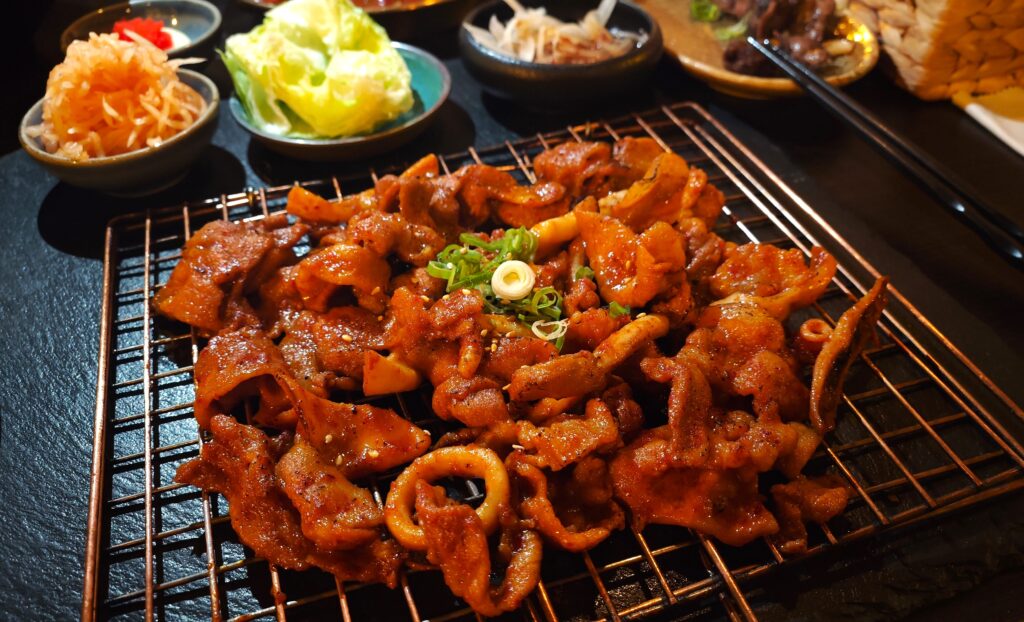
The meat has a smoky aroma and lightly charred edges, likely from the open-flame grilling.
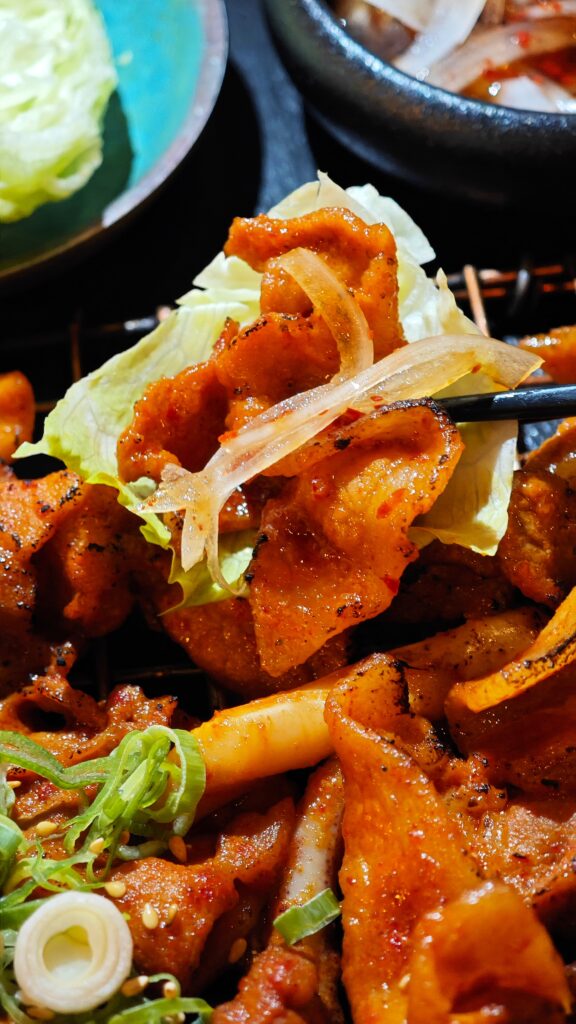
The pork belly is lightly sweetened with a classic bulgogi marinade made with soy sauce, sugar, garlic, sesame oil, and grated Korean pear, resulting in a savory, subtly sweet, and rich flavor. The octopus is tender and slightly chewy, soaking up the marinade’s flavors, while maintaining its natural briny juiciness.
The dish comes with fresh cabbage leaves, perfectly sized for wrapping into a single bite. Alongside, there’s a bowl of rice, soy-based dipping sauce with onions and chili and radish. This sauce adds a savory depth with a mild spiciness and tanginess, while spiced, sour fermented radish brings a tangy crunch that cuts through the richness of protein.
To best savor it, take a slice of pork belly and octopus, wrap it in a cabbage leaf, add a dab of the dipping sauce, and top it with onions and fermented radish.
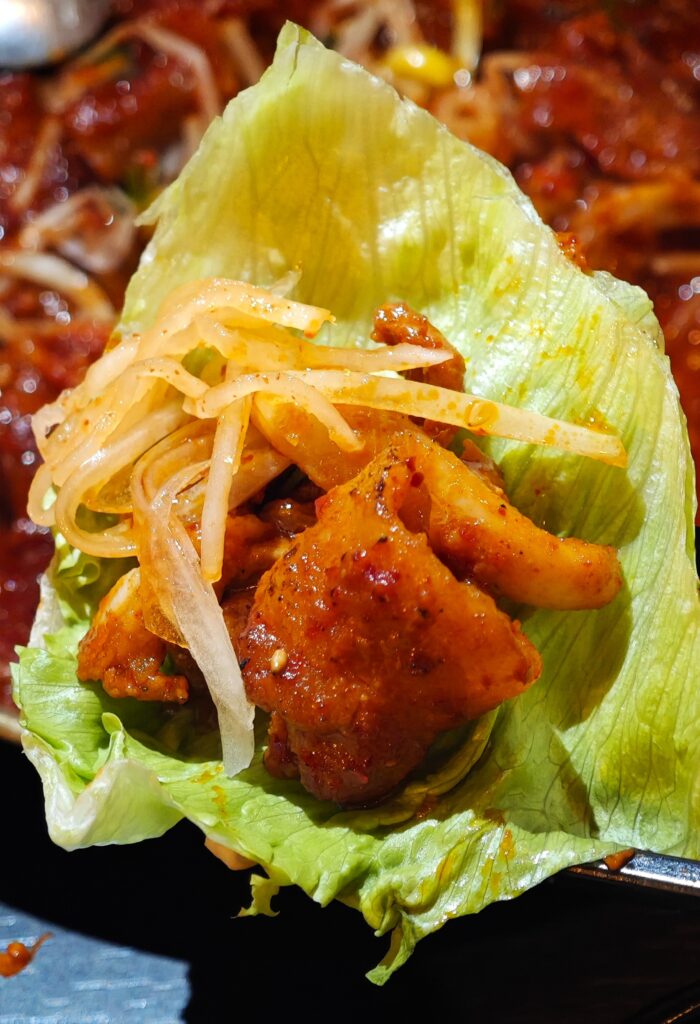
You’ll have smoky, savory, sweet, tangy, and crunchy flavors in one mouthwatering bite!
9. Seoksue So Bulgogi (석쇠소불고기) is a more classic take on this Korean barbecue dish. While bulgogi can feature various proteins, beef is the original and most traditional choice. This dish comes with the same sides as the previous dish: rice, soy-based sauce, and fermented redish.
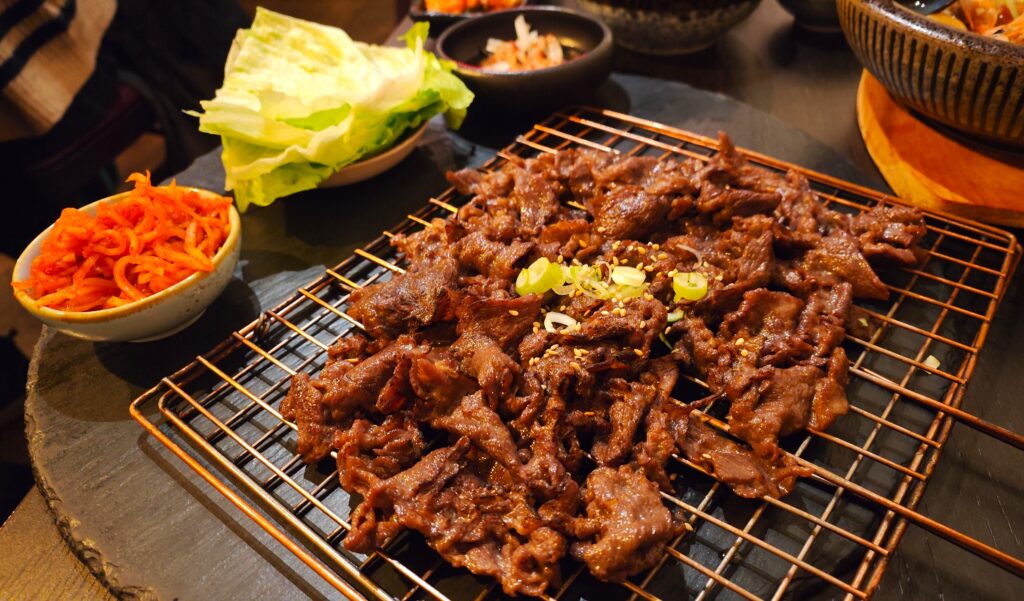
The grilled beef slices are lean, tender, and slightly charred. It has a smoky aroma and lightly caramelized edges, amplifying its natural heaty, beefy flavor. A classic marinade blend of soy sauce, sugar, garlic, sesame oil, and grated pear creates the signature savory flavor with a touch of sweetness, perfectly complementing the beef’s robust taste. Green onions and sesame seeds on top add freshness and a pleasant nutty aroma.
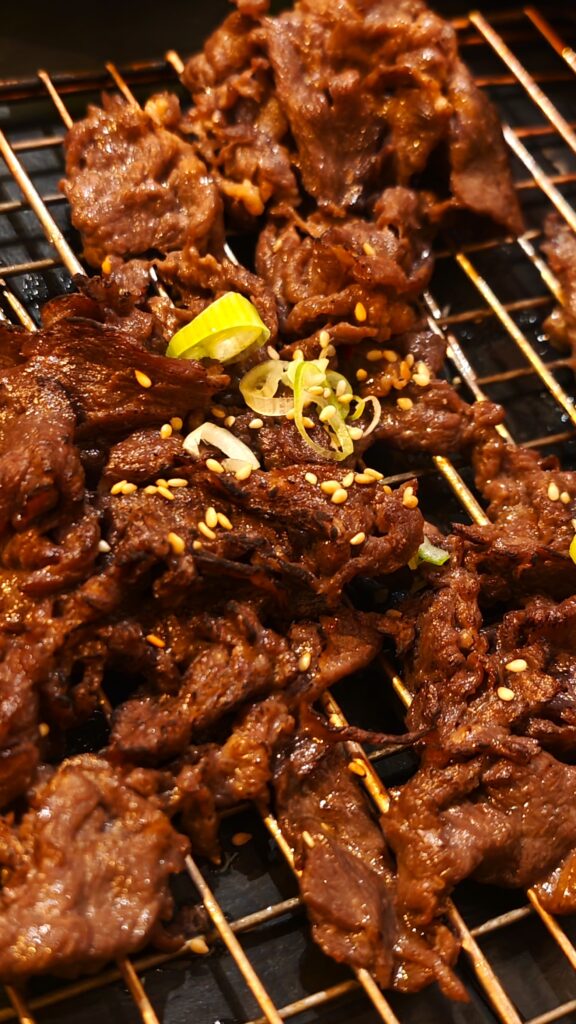
This dish comes with familiar sides of steamed rice, a soy-based dipping sauce with onions and chili, and fermented radish. Wrap the bulgogi beef in crisp salad leaves along with the sweet-spicy banchan (side dishes), and enjoy the combination of smoky, tangy, and refreshing in every mouthful!
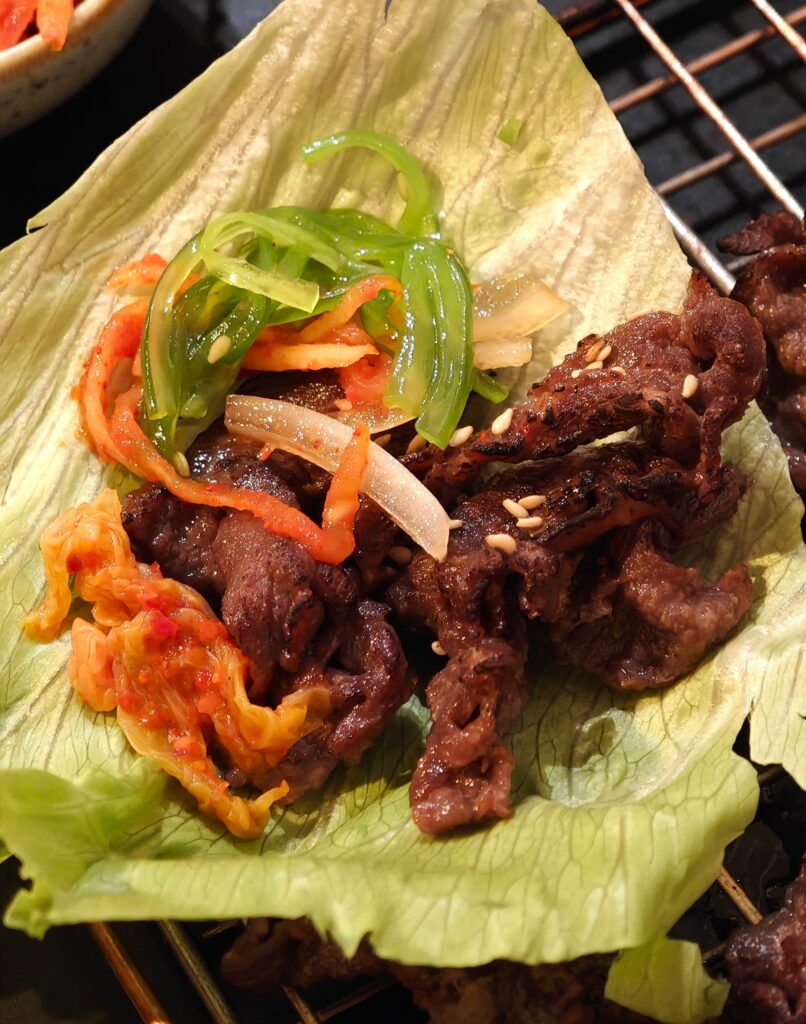
Bonus: the salad wraps can be added for free, but the beef on its own is just as delicious.
17 Haemul Eomuk Tang (해물 어묵탕) is a hearty, soothing Korean dish, perfect for seafood lovers and anyone craving a comforting bowl of warmth. This seafood and fish cake soup is a popular staple in Korea, particularly during colder months, offering a balance of mild, umami flavors with a briny oceanic touch.
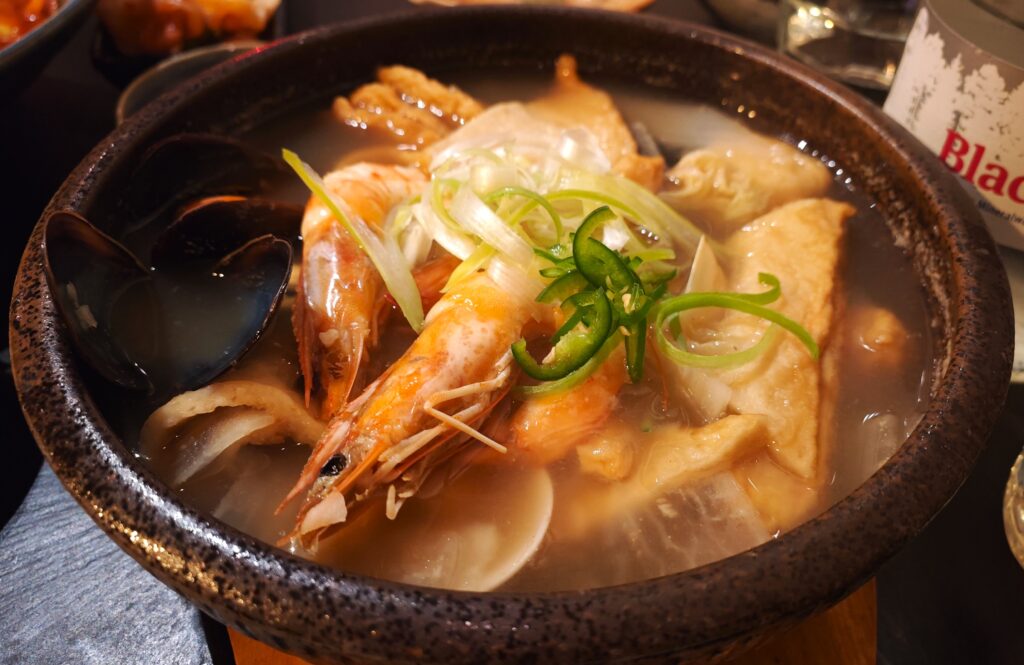
The fish cake (eomuk), made from finely ground fish blended with flour and seasonings, has a soft, springy texture and a distinctive savory-sweet flavor that reminds you of sea. It absorbs the broth nicely, adding depth and richness to every bite.
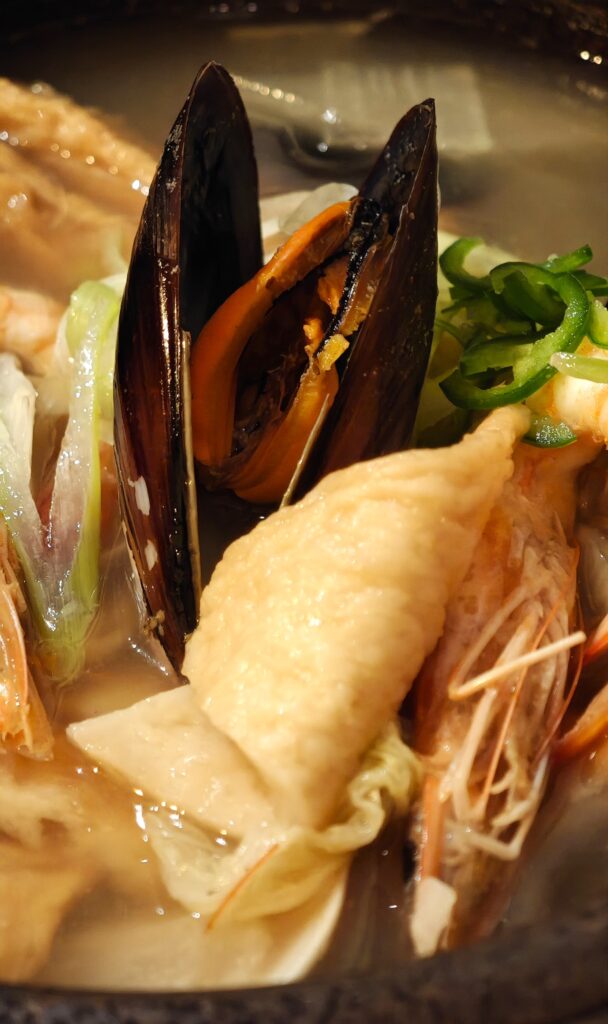
The clear broth is delicately seasoned and brimming with a fresh oceanic flavor – subtly briny and sweet – thanks to a mix of plump mussels, silky clams, and juicy shrimp. Complementing the seafood are slices of radish, leeks, onions, and cabbage, which add a crunch and a natural vegetable sweetness.
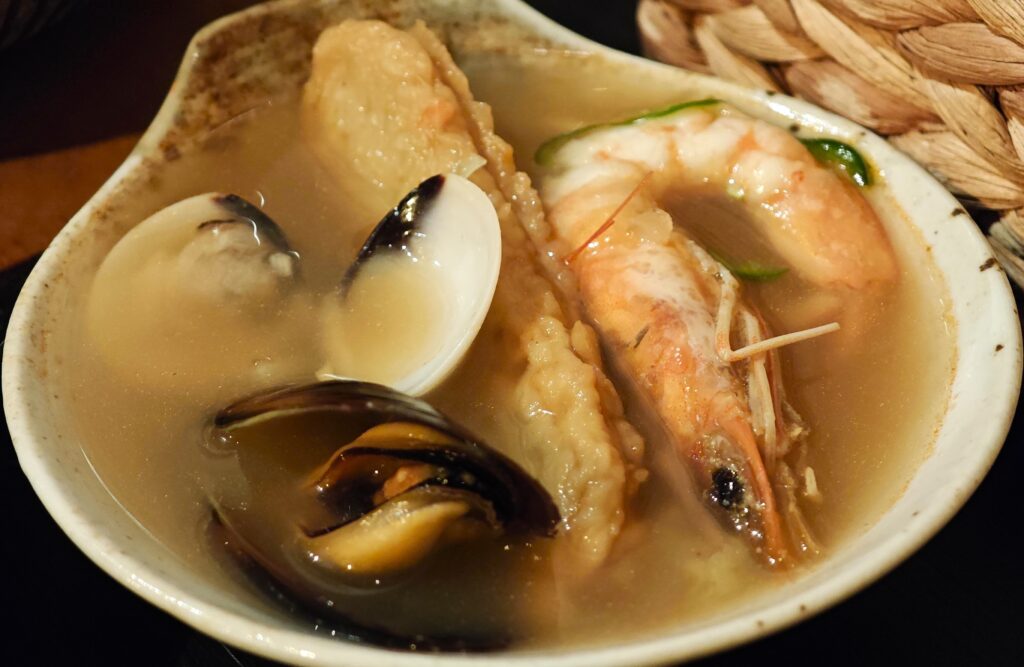
On the side, there’s a bowl of rice and a soy-based dipping sauce that adds an earthy, salty kick to the fish cake and seafood.
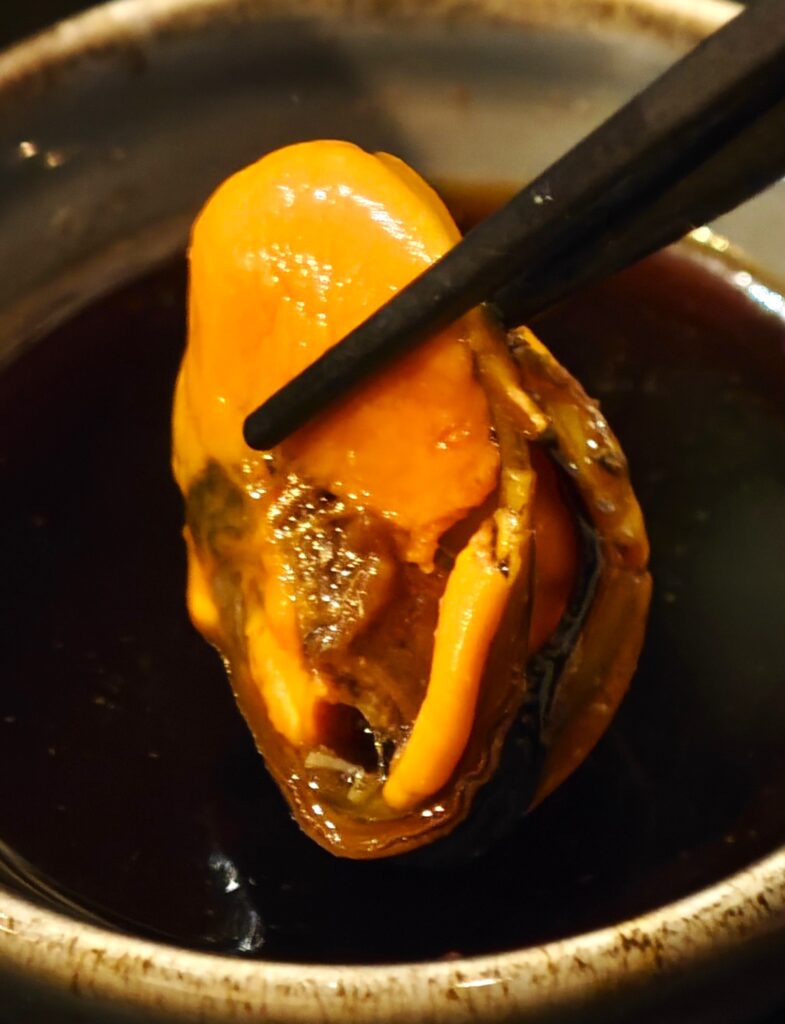
The soup’s gentle flavor is ideal for balancing the bold and spicy profiles often found in Korean cuisine.
10 Buldak (불닭) is a fiery, flavor-packed Korean dish. The name “Buldak” translates to “fire chicken,” and it lives up to its name with its bold and spicy chili sauce. It’s served with tender chicken pieces, vegetables, and soft rice cakes.
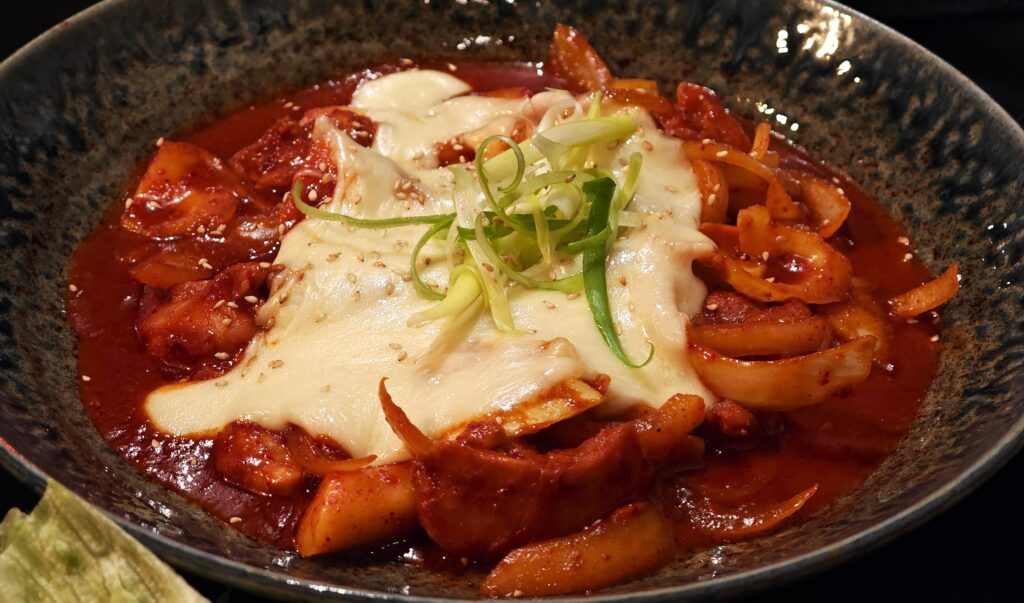
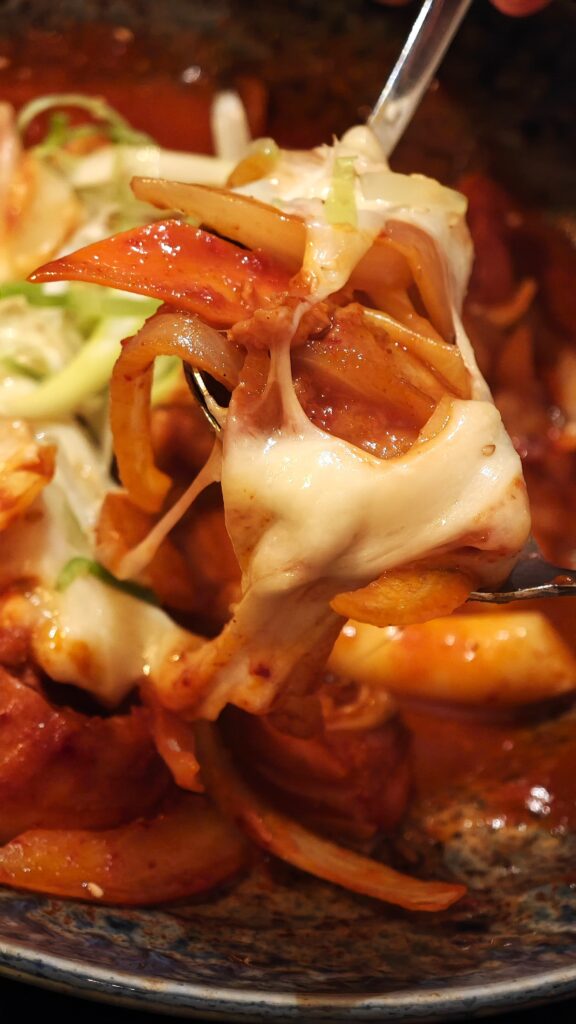
The chicken is tender, and naturally mild in flavor, making it the ideal canvas for the bold and fiery seasoning. The chili sauce really delivers a punch of spiciness, balanced by a subtle sweetness, creating a very dynamic taste. The rice cakes (tteok) are a bit chewy, while their starchy texture absorbs the sauce for a satisfying bite.
We recommend topping this dish with melted cheese (for an extra €2). The cheese softens the heat of the chili sauce and brings a rich, comforting layer to the dish. Freshly sliced leeks provide an oniony sharpness that compliments the intense flavors.
One of our favorite dishes, Buldak gives an exhilarating kick, with a perfect balance of heat and sweetness.
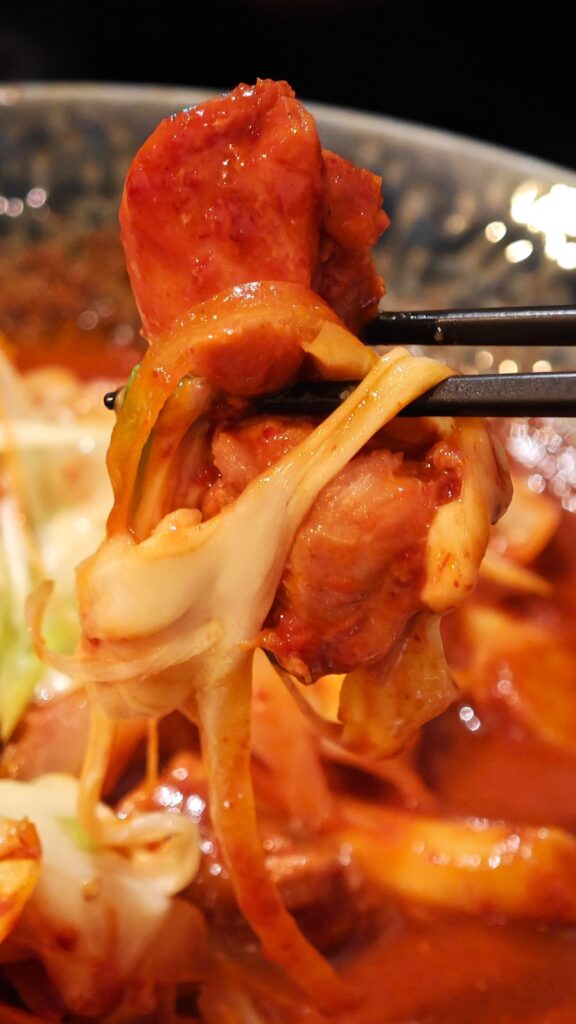
20 Dakbal + DIY Rice Balls (닭발 + 주먹밥) is a bold and adventurous take on Korean cuisine, combining the exotic flavors of spicy braised boneless chicken feet (dakbal) with DIY (Do It Yourself) rice balls (jumeokbap).
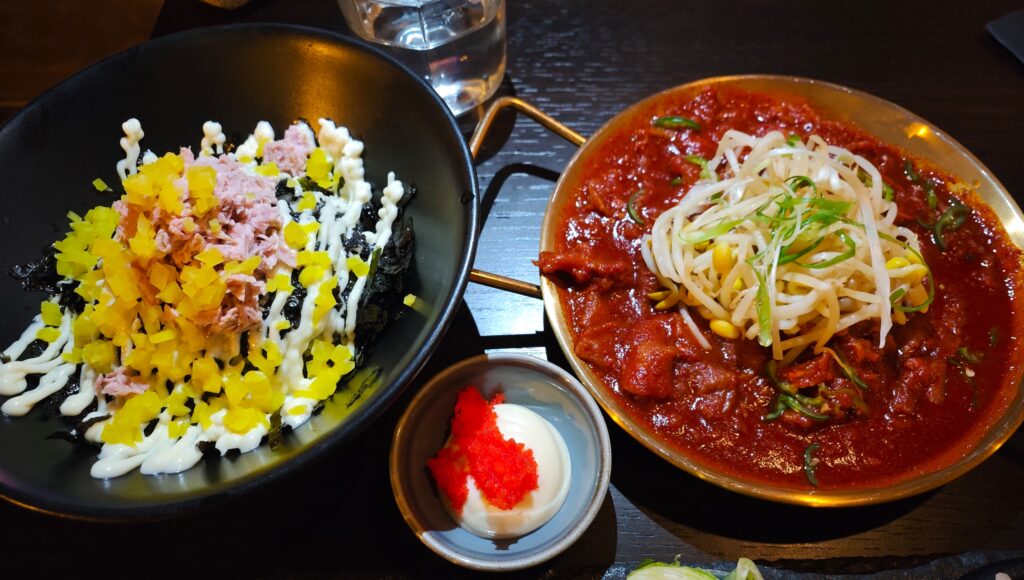
The chicken feet are braised to in a fermented chili sauce, delivering intense heat with a deep, earthy, umami-rich flavor similar to fermented tofu (腐乳). The sauce is spicy, salty, and slightly tangy, clinging to every piece for maximum flavor.
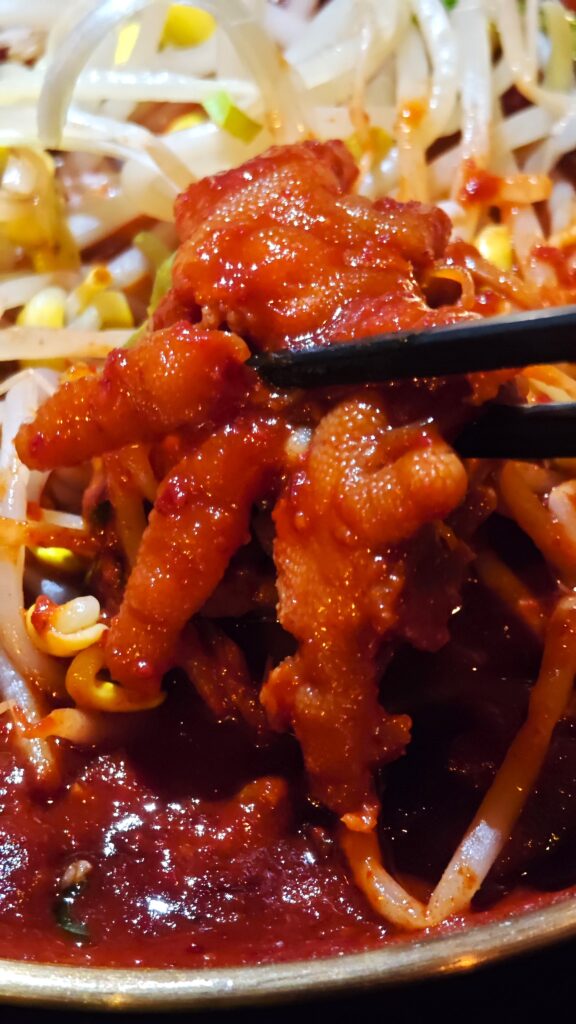
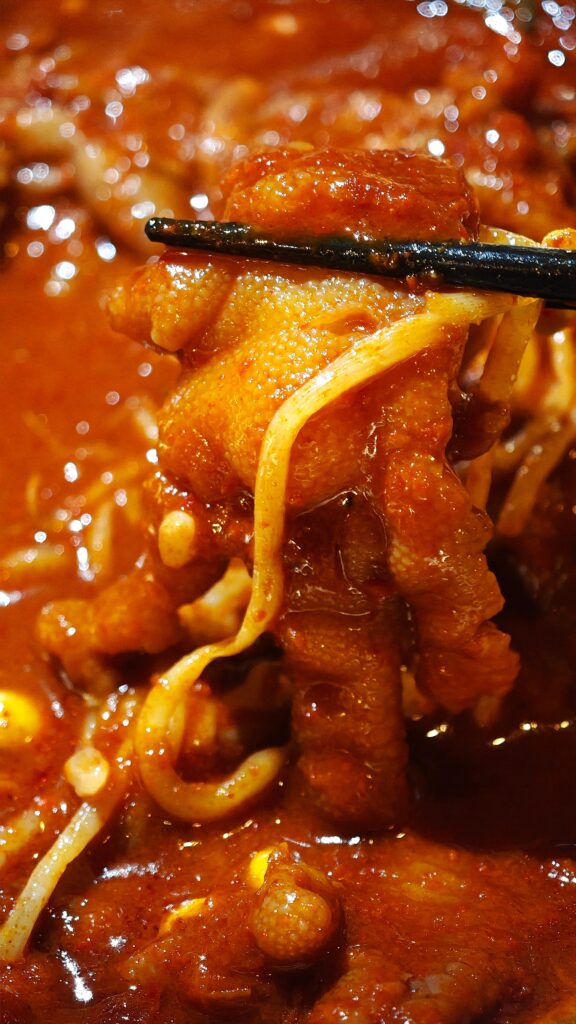
Despite of being a little gamey, the chicken feet are uniquely delicious. The tendons are soft and lightly chewy, while the skin and fat are meltingly tender, creating a luxurious, gelatinous mouthfeel.
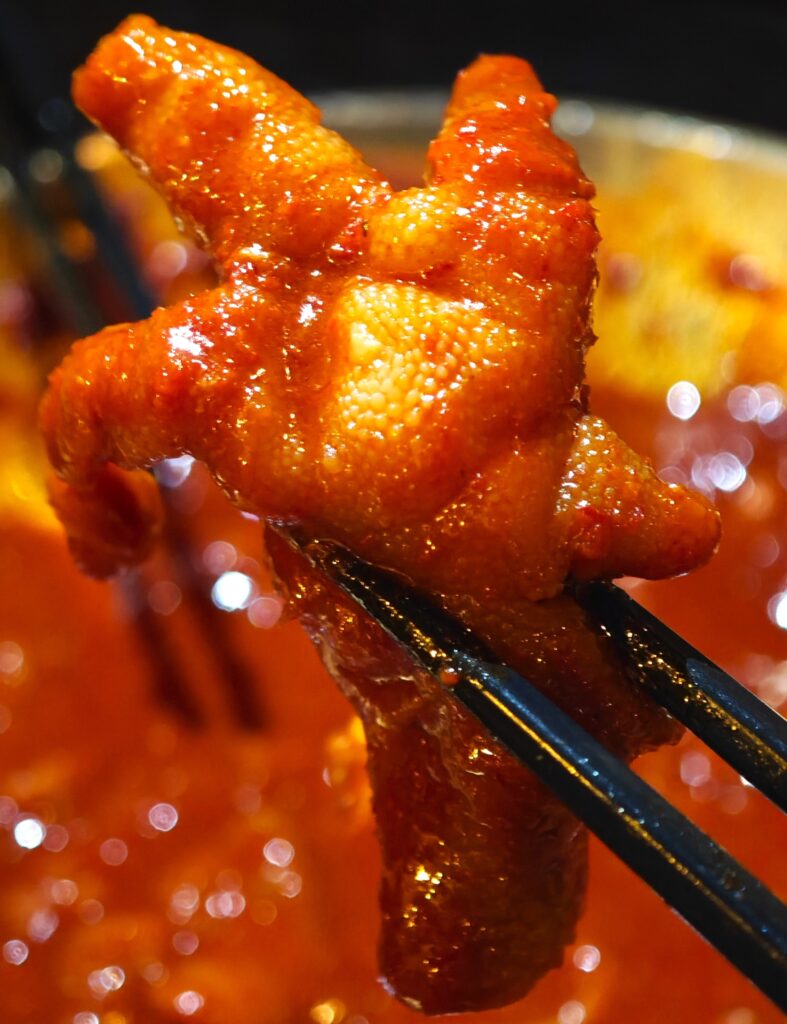
The dish also includes fresh leeks and spring sprouts, which add a fresh crunch that balances the rich, spicy notes.
A side of mayo topped with fish roe serves as a cooling contrast. The mayo is creamy, light, and slightly tangy, while the fresh, popping fish roe adds a burst of briny flavor, perfectly harmonizing the fiery chicken feet.
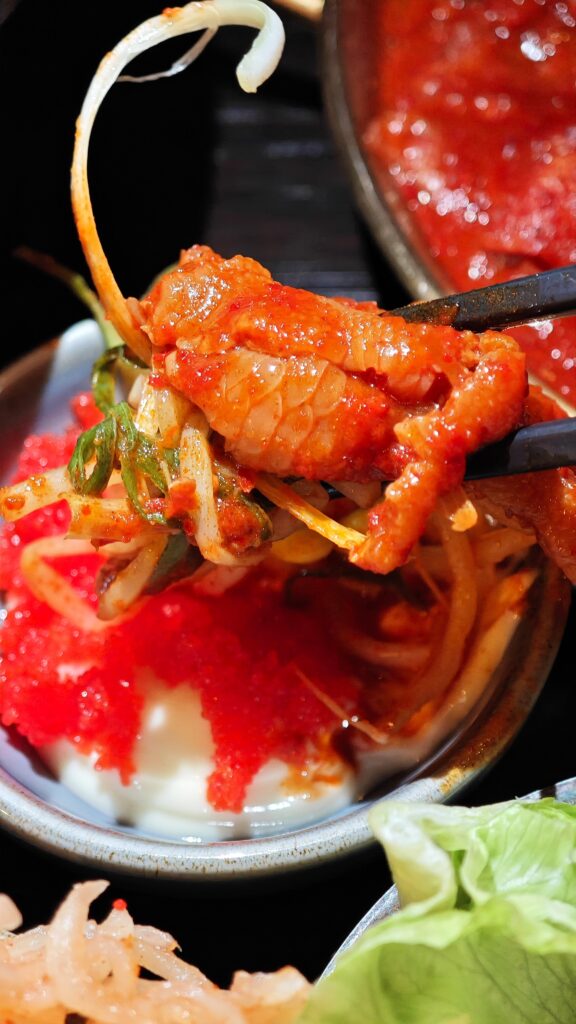
There is also a customizable side – DIY rice balls. It’s a bowl of warm rice mixed with mayo and cooked tuna that’s soft and slightly tangy with a delicate umami flavor. Yellow pickled radish (danmuji) lends a crunchy, sweet and tangy bite, while Nori (seaweed flakes) infuses an umami, oceanic depth to the mix.
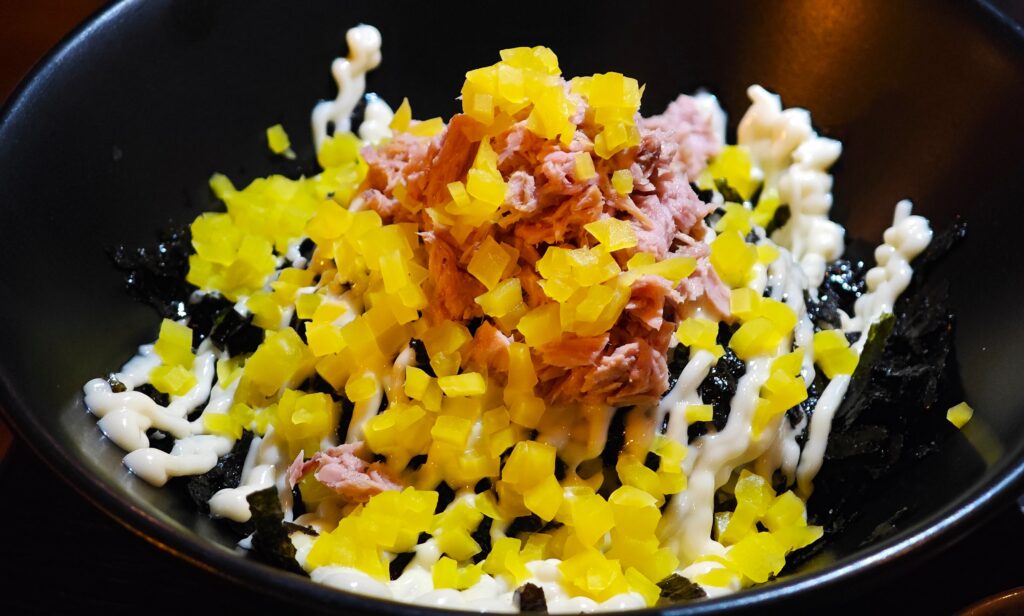
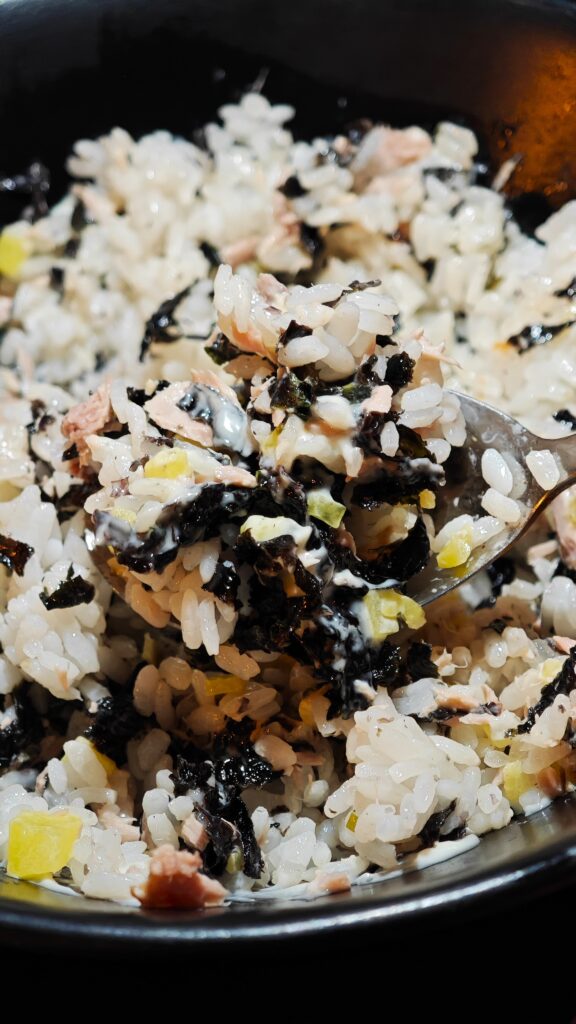
This combination mirrors the flavors of traditional Korean rice rolls (kimbap). You can eat the rice with a spoon or use a glove provided to shape it into small, bite-sized balls. Its mild, comforting flavor helps sooth the heat of the chicken feet, delivering a thrilling balance of fiery indulgence and creamy comfort.
Korean cuisine, built on a rich history and deep culinary traditions, continues to evolve with creative fusions and innovative takes on classic flavors. At Danji, this spirit of innovation shines through various dishes. Beyond what’s highlighted here, the Sundubu Jjambbong Tang, a Korean-Chinese fusion hotpot with pork, seafood, vegetables, and tofu, is also very popular.
The menu doesn’t stop here – from noodle dishes to classics like Tteokbokki (spicy stir-fried rice cakes), Korean Fried Chicken (crispy, sweet, and savory), hotpots featuring kimchi, pork, and tofu, Mandu (Korean dumplings) and the iconic Bibimbap (a rice bowl topped with assorted ingredients) – it’s full of delicious options. Whether you’re a longtime fan of Korean food or just want to try some new, exciting flavors, you’re sure to find something to your liking.
